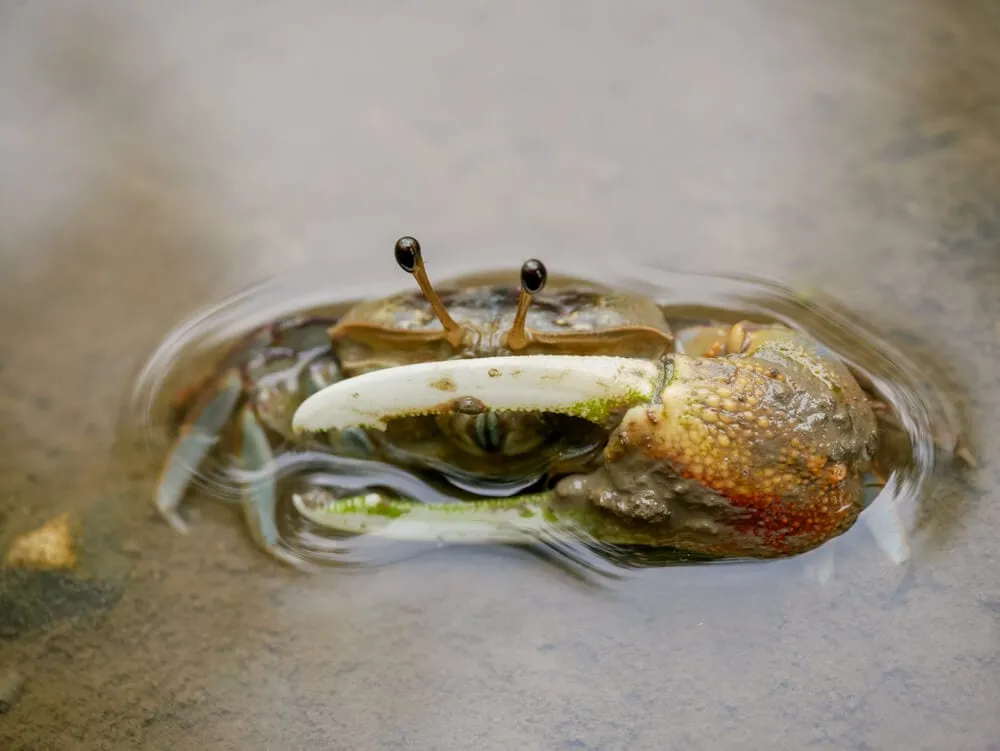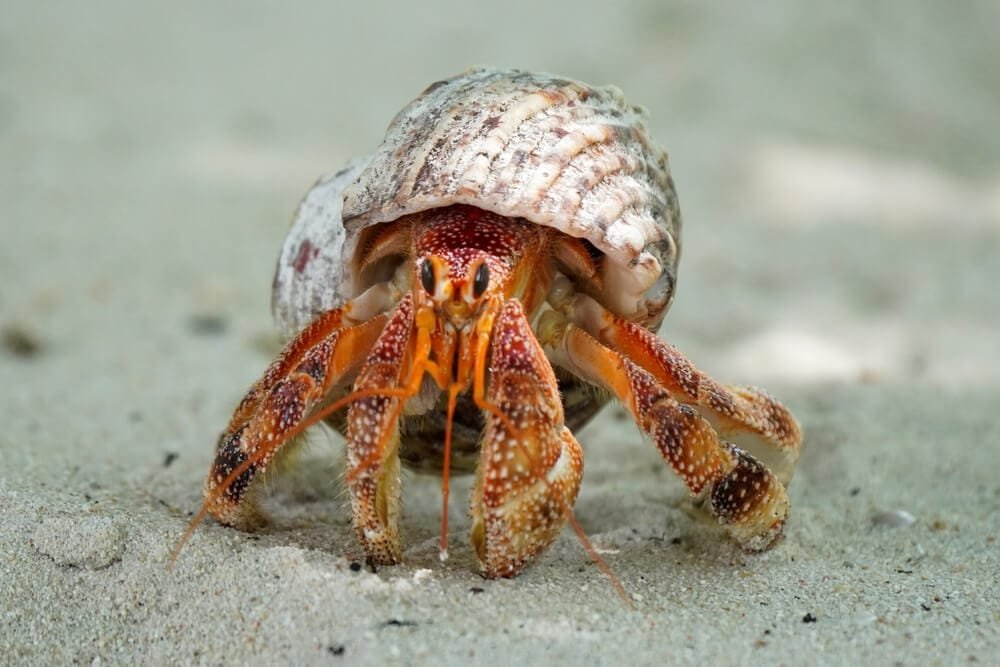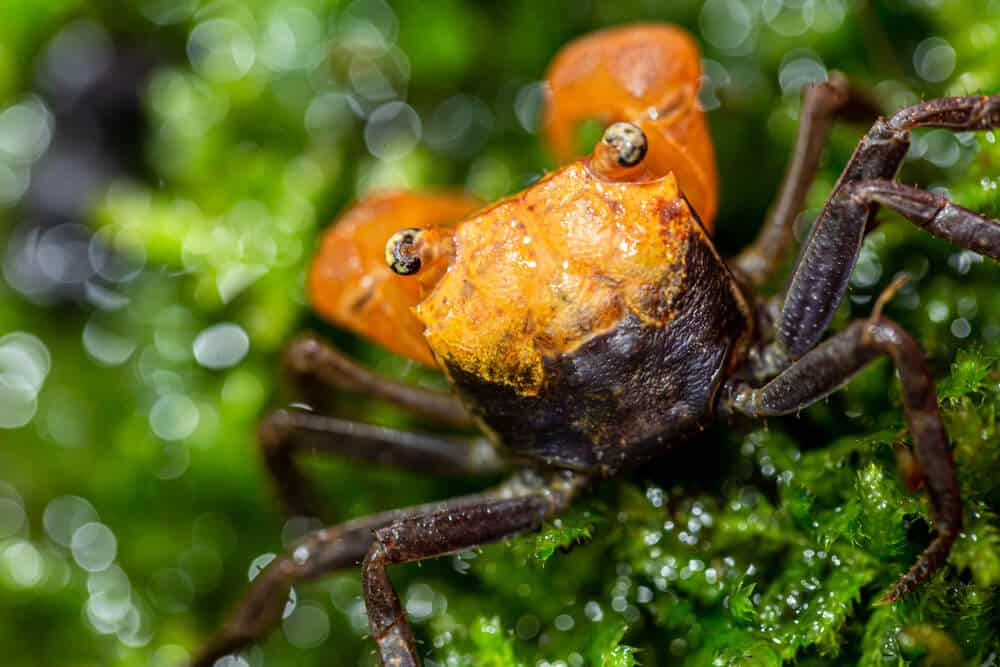Typically found in salt marshes, Fiddler Crabs require an optimal aquarium setting that mimics their natural habitat, so they can properly thrive.
Usually, this involves keeping them in a clean plastic or glass tank that is maintained regularly. Because Fiddler Crabs are used to a certain type of water density, however, owners must make sure that they are giving the correct type of water for their Fiddler Crabs.
If this is not achieved, Fiddler Crabs may die as early as two weeks.
To make sure that your Fiddler Crabs thrive in a healthy environment, brackish water (the type found in salt marshes) can be added.
While brackish water can be purchased in stores, it can also be made at home using common ingredients already available in most households.
Here are the steps in creating your brackish water at home:
Gather the Ingredients
● Freshwater
● Sea salt (20 g)
● Stirring rod
● Beaker
● Hydrometer or refractometer
Follow the Procedure
Because the salt composure of brackish water is less than regular seawater but more than freshwater, it is important to correctly measure how much salt you are going to add to achieve optimal results.
If not followed properly, your Fiddler Crabs may find it difficult to thrive in their tanks.
To achieve accurate brackish water, first, weigh about 20 grams of salt and set it aside in a clean container.
Next, get your beaker and add both the salt and freshwater until the volume fills up to 1,000 ML.
Finally, properly stir the mixture to make sure that all the salt has dissolved into the freshwater.
To measure the specific gravity of your brackish water, take out your hydrometer or refractometer and dip it inside the mixture while holding it straight with your hand.
Refractometers are often recommended as they are more accurate, but whichever equipment you have available at home can work just as fine.
Ideally, the measurement should come out as 1.005 – 1.010. Your mixture must fall under the ideal specific gravity measurement for brackish water because it can assure that the mixture you’ve created is correct.
If the SG measurement falls too short or too much, you may have made something similar to either simple freshwater or saltwater which is not ideal for Fiddler Crabs.
The Benefits of Using Brackish Water
Aside from brackish water being the ideal water density for Fiddler Crabs, it also brings a multitude of benefits.
For instance, brackish water is composed of multiple minerals and water parameters that kill various freshwater parasites and diseases that can potentially harm Fiddler Crabs.
Additionally, more plants are also able to thrive in brackish water which can allow for more inclusions in your tank.
Some examples of these plants are mangrove trees and java ferns. With the proper care and maintenance, brackish water is an optimal choice to create aquatic habitats for Fiddler Crabs.

Some Things to Remember
After you have successfully made your brackish water at home, there are also important things to keep in mind before pouring it into your Fiddler Crab tank.
Firstly, remember to remove all contents of the tank and perform a thorough rinsing (without soap) to make sure that all other substances that can affect the mixture of your brackish water have been removed.
Once done, you can add your brackish water immediately by carefully pouring it into the tank.
Some experts also advise checking the specific gravity measure again after 8 hours, just to make sure that the desirable specific gravity measurement is still intact.
Finally, make sure to properly install the aquarium lid to keep the Fiddler Crabs from escaping.
If you care for other aquatic creatures, first make sure that they can thrive in brackish water if you also intend to create a mixture for them.
Not all marine life can thrive in brackish water the way Fiddler Crabs can, so first research if it is safe and recommended.
Maintenance of Brackish Water
Since brackish water can be easily made at home, tank maintenance is also simple as long as it is followed consistently and correctly.
Because salt is usually removed whenever the water needs changing, the decreased amount must be noted to maintain the salinity levels ideal for brackish water.
For instance, if you choose to remove half of the water amount in your tank, you must follow the correct salt measurement mentioned previously to properly create brackish water again.
To illustrate, if you replace about 30 liters of water from your tank, you should remember to add approximately 600 grams of salt back.
This is based on the 20 grams of salt to 1000 ML of freshwater ratio procedure for making brackish water.
To achieve optimal brackish water, it is also recommended to check the specific gravity measurement using your hydrometer or refractometer every once in a while or every time you replace the water in your Fiddler Crab tank.
As an extra measure, you can also opt to regularly check the temperature of your Fiddler Crab tank to make sure that it is set to the ideal measurement.
Although it is not too critical for brackish water to be at a certain temperature, it is still recommended that Fiddler Crabs are kept in a tank temperature between 75 to 82 degrees Fahrenheit or about 24 to 28 degrees Celsius for them to thrive.
To achieve this, simply use a regular thermometer and adjust the location of the tank if the temperature needs changing.
Conclusion
Fiddler Crabs must live in an aquarium that mimics their natural habitat in salt marshes.
Achieving this is easy with the help of proper tank equipment and a consistent adherence to the specific needs of Fiddler Crabs such as the type of water they need to survive.
While brackish water can be easily purchased in stores every time you need to replace the water in your tank, it can also be easily made at home using common ingredients already found in most households.







